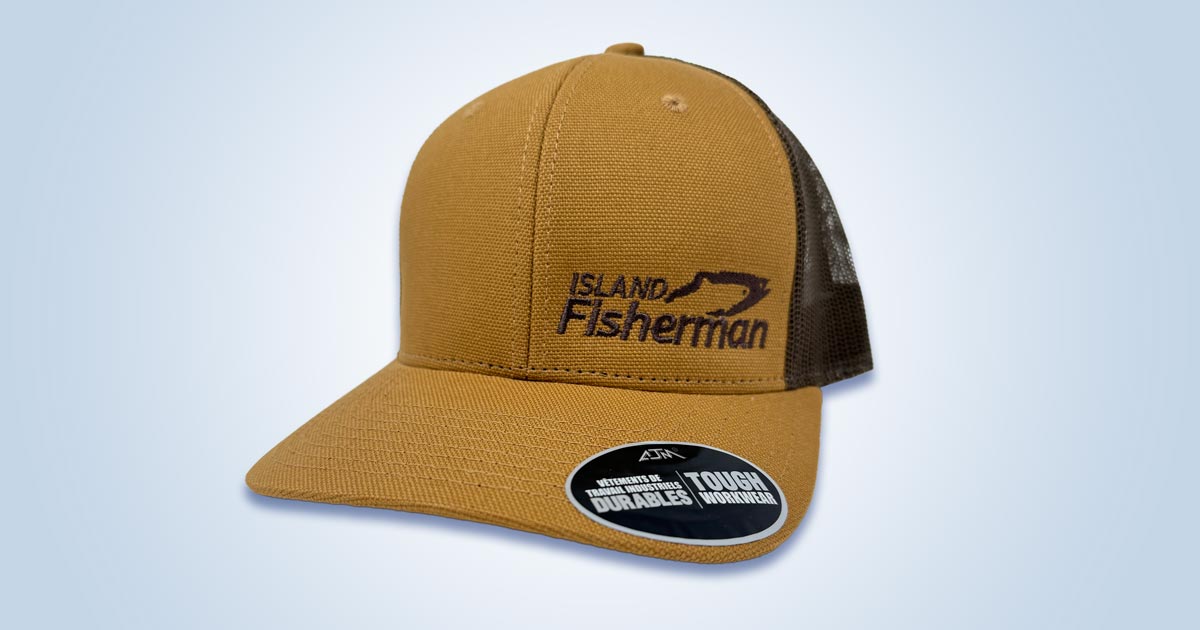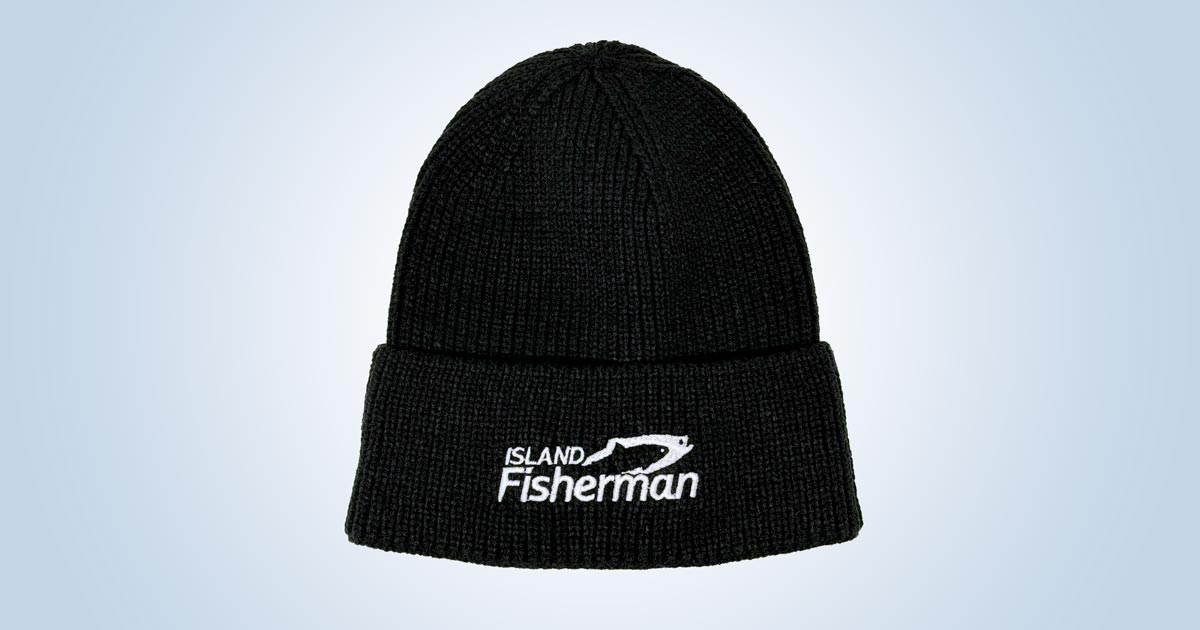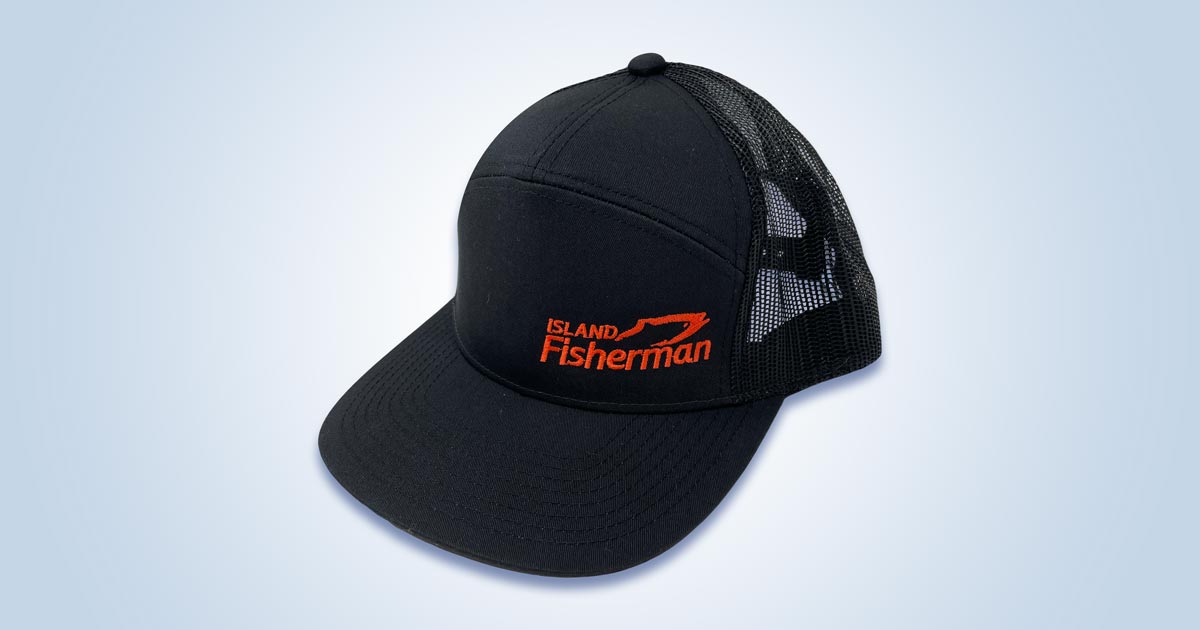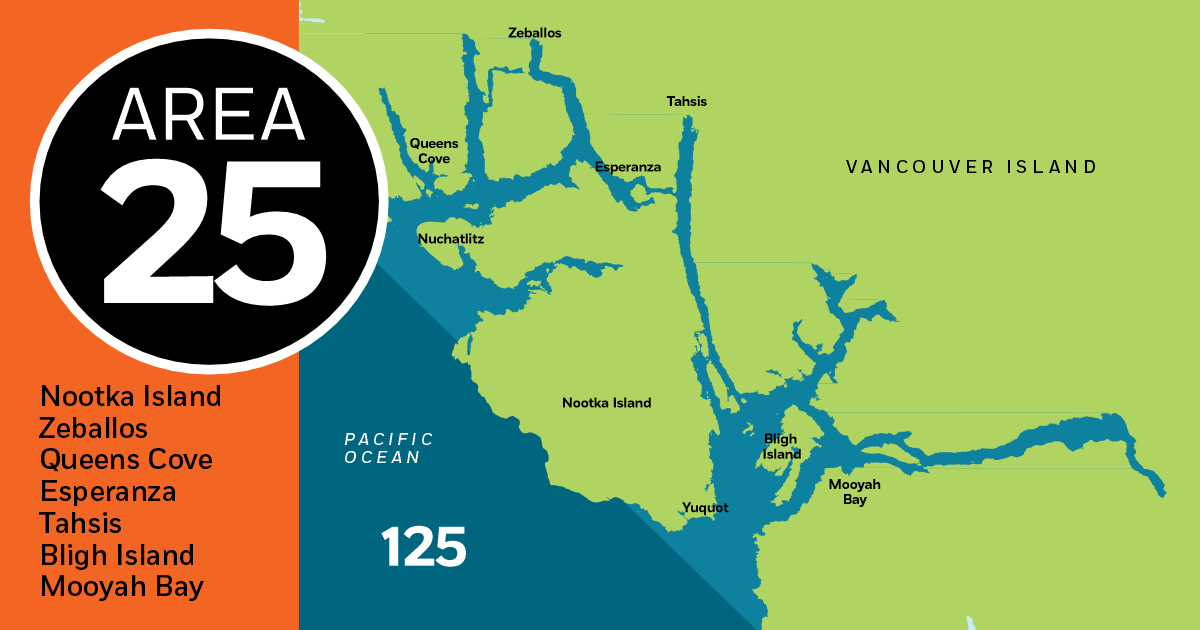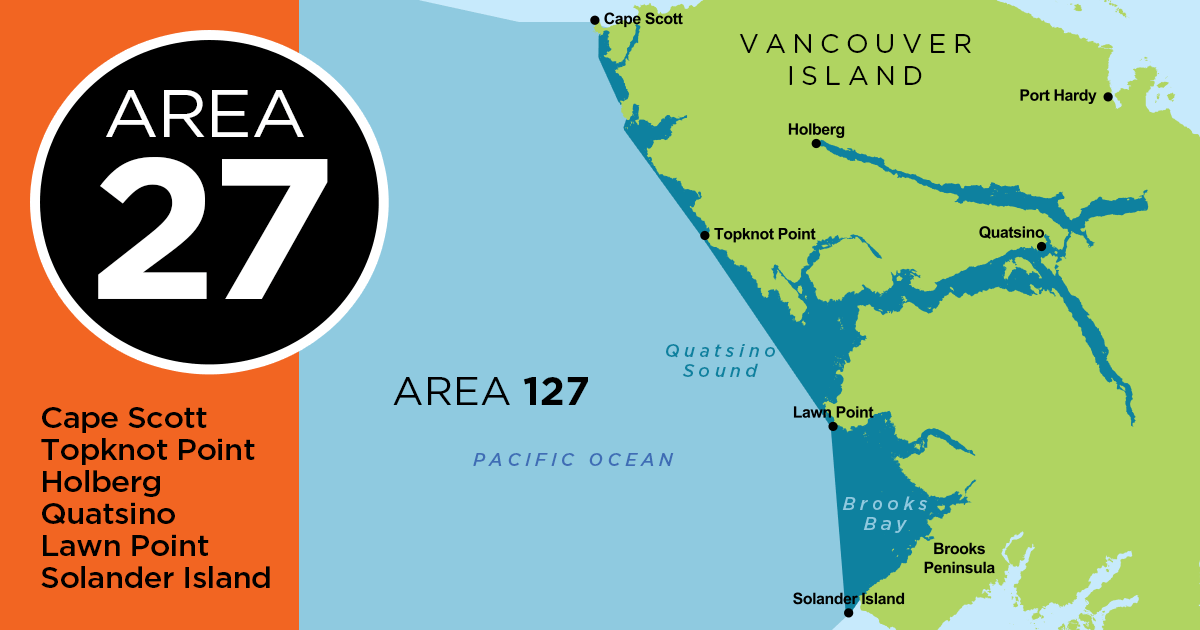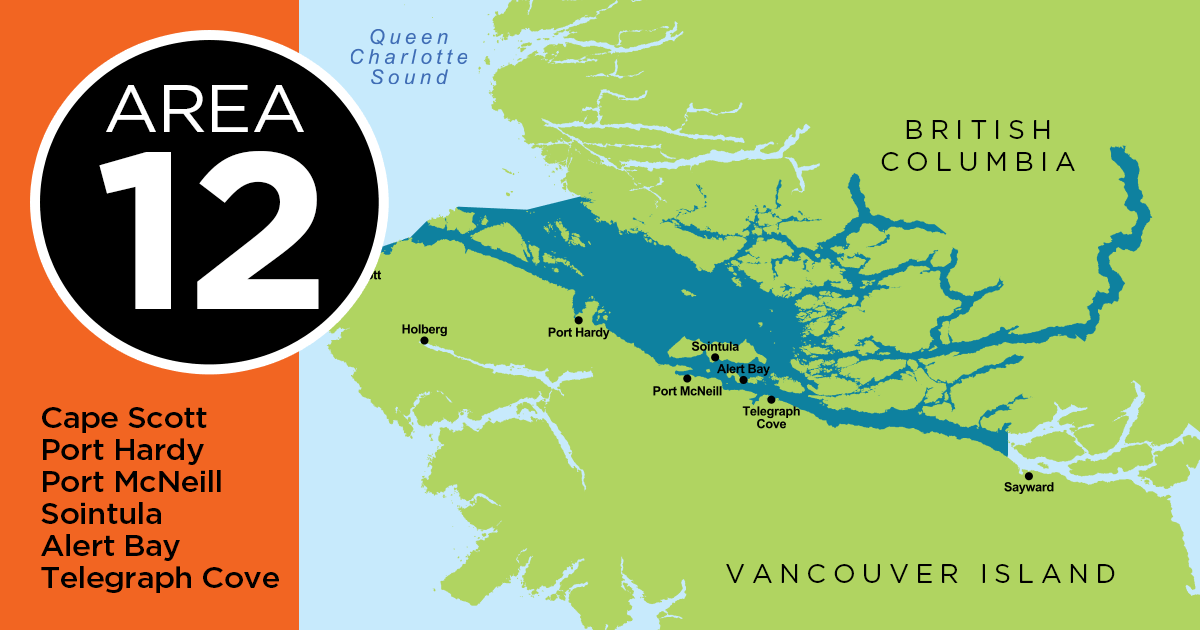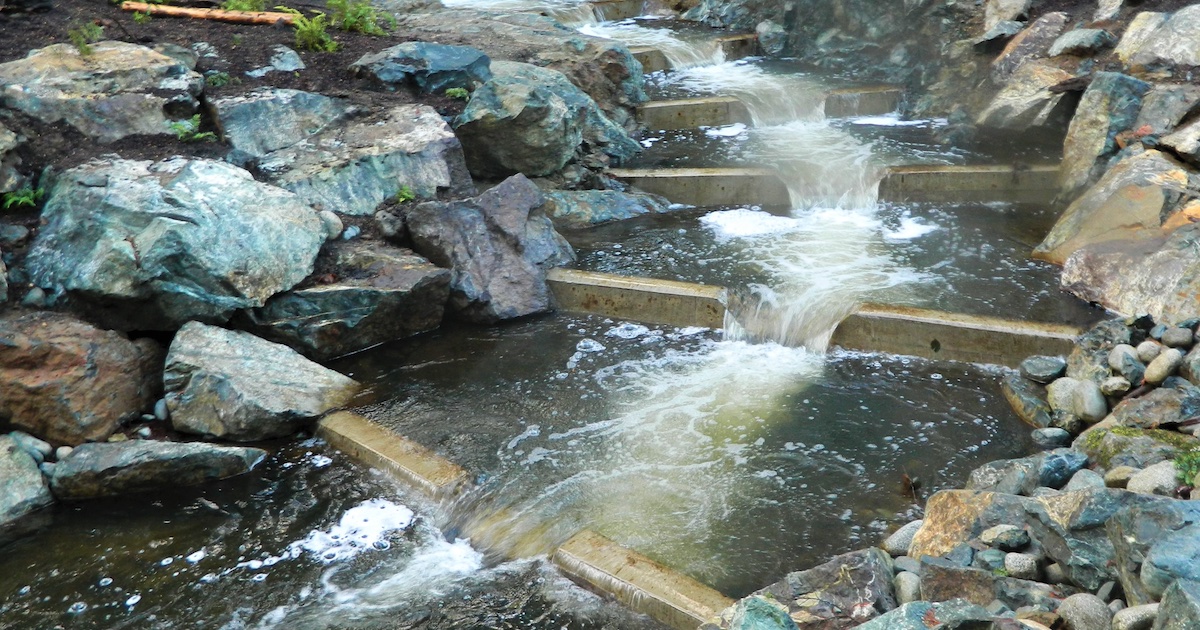
Millstream Creek Background
Millstream Creek is one of three significant watersheds that drain the southern half of the Saanich Peninsula. These are not big streams in comparison to south island rivers like the Cowichan to the northwest and the Sooke to the west. They are, however, important coho and cutthroat systems that, in spite of being located in Vancouver Island’s most densely populated residential and industrial areas, have remained intact with the help of dedicated volunteers and funding programs. The Colquitz River is the easternmost watershed and it drains into Portage Inlet, as does its close neighbor Craigflower Creek. Both historically supported wild salmon and trout runs. In recent decades each system has recorded coho returns ranging from a few hundred to 1,000 fish.
Millstream Creek is the easternmost system. The Highway 14 Bridge crosses the estuary at the head of Esquimalt Harbour. Millstream is an interesting system. It never supported salmon runs because of steep impassible cascades beginning at tide water. It does contain native cutthroat trout, but most importantly it had terrific potential as a coho and sea run cutthroat stream. This is due to its large intact watershed containing numerous tributaries originating from small lakes and water retaining bogs.
Peter McCully is the technical advisor for the Goldstream Volunteer Salmon Enhancement Association and the Howard English Hatchery. He also lives beside Millstream Creek, and decades ago he recognized its untapped potential.
Early Restoration Activities & Results
Thanks to a sizeable financial contribution from the City of Langford, five concrete fishways were constructed between 1996 and 2006 to pass adult coho and sea run trout over the blockages. The Goldstream hatchery provided the coho fry to seed the system, and the Goldstream Salmon Enhancement Association provided volunteer labour. Success followed with a substantial 2017 coho escapement of 700 adults, but one major impediment remained. The Atkins Road culvert is located roughly 3 km above tidewater. It presented an impassible barrier which prevented access to kilometers of good-quality spawning and rearing habitat.
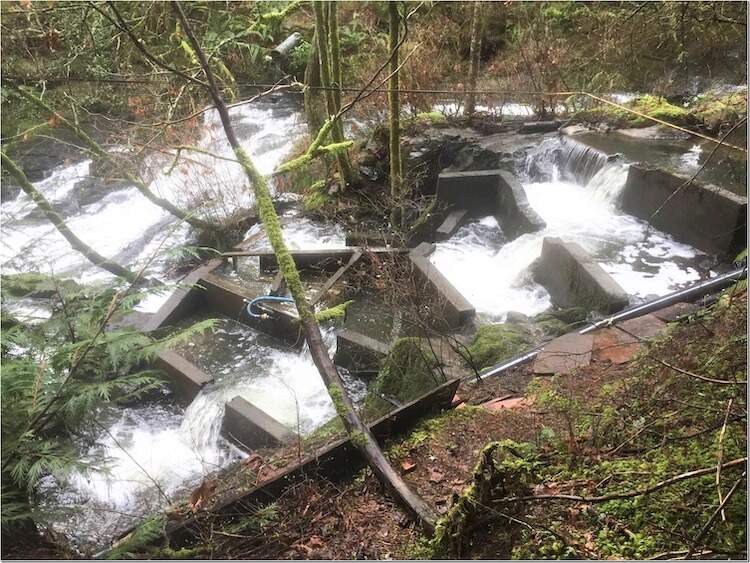
One of the original fishways built between 1996 and 2006
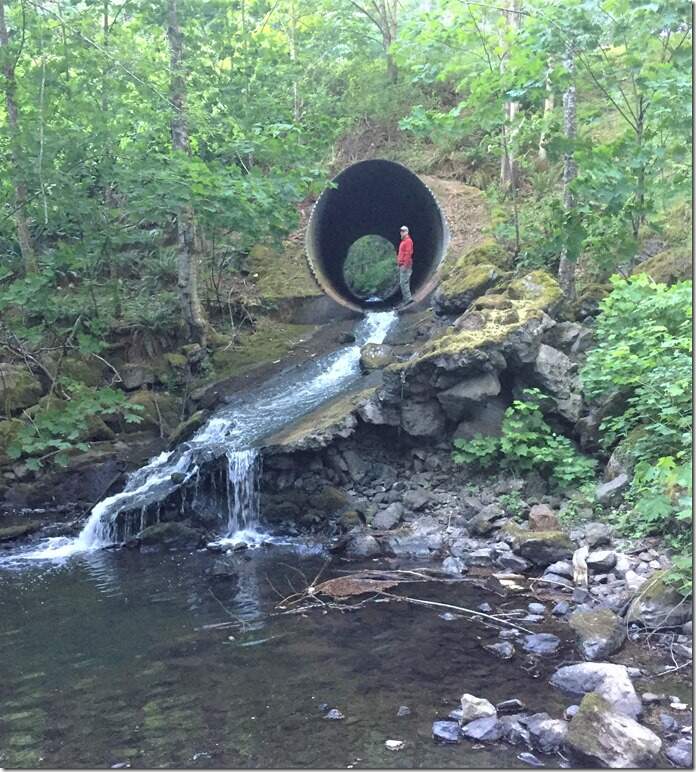
Atkins Road culvert prior to 2020 fishway construction
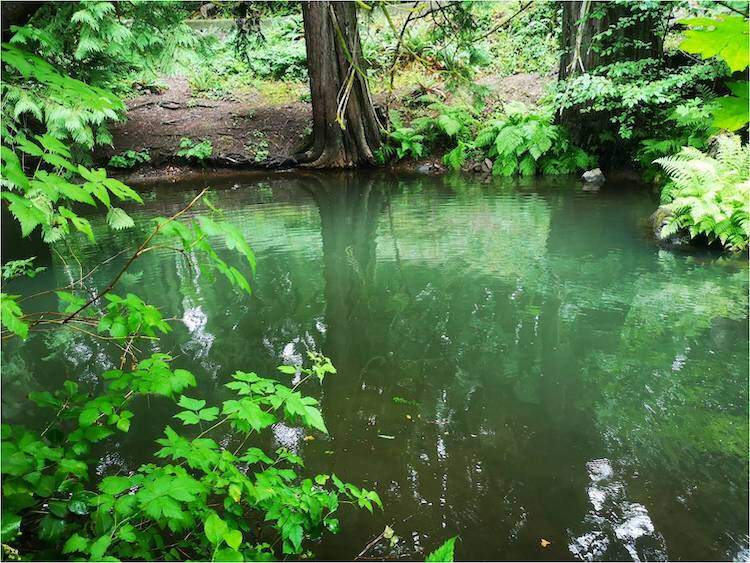
Good spawning and rearing habitat above the culvert
The Peninsula Streams Society (PSS) began in 2002 as a small umbrella organization dedicated to restoring and, where possible, reintroducing salmon to degraded streams on the northern half of the Saanich Peninsula. Their work also included stream restoration on Hagan and Graham Creeks to assist native cutthroat trout.
Ian Bruce has headed up PSS from the outset. In the past 18 years the group has expanded operations further south towards Victoria with projects like invasive species removal, stream assessments, riparian plantings, beach surveys, beach restorations, and in-channel stream restorations. They have done this with a tiny staff of three which is periodically augmented by students from Camosun College and the University of Victoria. Major projects include substantial stream remediation for coho in Reay Creek, leading the charge for contaminated sediment removal from Reay Creek, and completing a smaller fishway project on Todd Creek which opened up kilometers of habitat to coho salmon.

Ian Bruce
The Atkins Road Fishway
It doesn’t take much to ruin streams, but it’s expensive to restore them, and the Atkins Road fishway has been the society’s biggest challenge. From conception to completion, the project took 4 years and cost more than $900,000. Bruce recently pointed out that it cost $1,000 per linear metre to remediate a damaged section of Colquitz Creek.
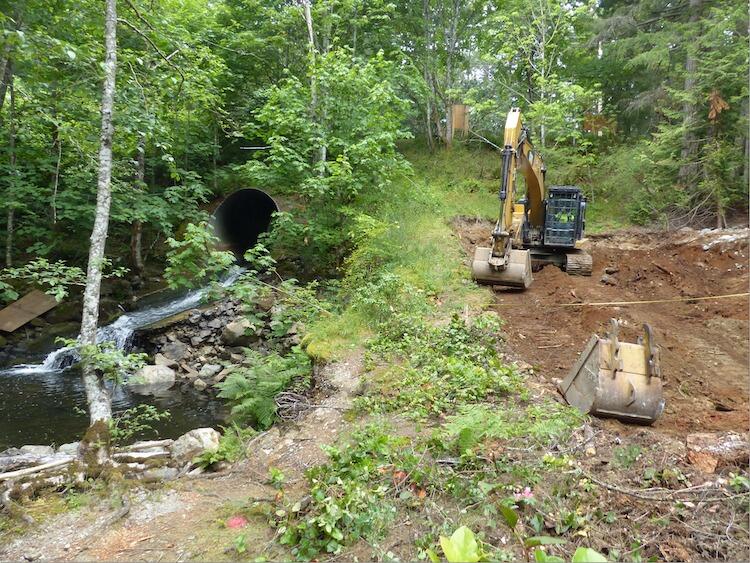
Preliminary heavy equipment work immediately below the culvert
Funding and in-kind contributions came from the BC Salmon Restoration and Innovation Fund, BC Gaming, Fisheries and Oceans Canada; the Pacific Salmon Foundation, Goldstream Hatchery Volunteers, the Gudewill family, Victoria Fish & Game Protective Associatio, Esquimalt Anglers, Town of View Royal, Keycorp, Fortis BC, Ecoasis (Bear Mountain), Langford, Ralmax Group, CRD Parks, and local volunteers. Northwest Hydraluics and Graham Hill contributed consulting and engineering efforts.
This was a huge project, requiring 125 cubic metres of concrete, 25,000 lbs of reinforcing steel, and 5,000 tons of rock.

Completed fish way. The culvert entrance is at the upper left.
It’s unknown if adults migrated past the fishway in 2020. Heavy rains produced high flows that make visual counts impossible. In 2021, however, there are plans to release 25,000 coho fry in the upstream habitat. To date, PSS has assessed 6.5 kilometers of productive habitat above the new fishway and it’s estimated that there may be another 3 to 5 kilometers containing additional spawning and rearing capacity. Bruce predicts that, “In a few cycles there should be enough wild-spawned coho making their way upstream to create a sustainable upstream run” and “that run could triple the size of recent escapements”.
Visit the Store
$34.99
$34.99
Featured Catch
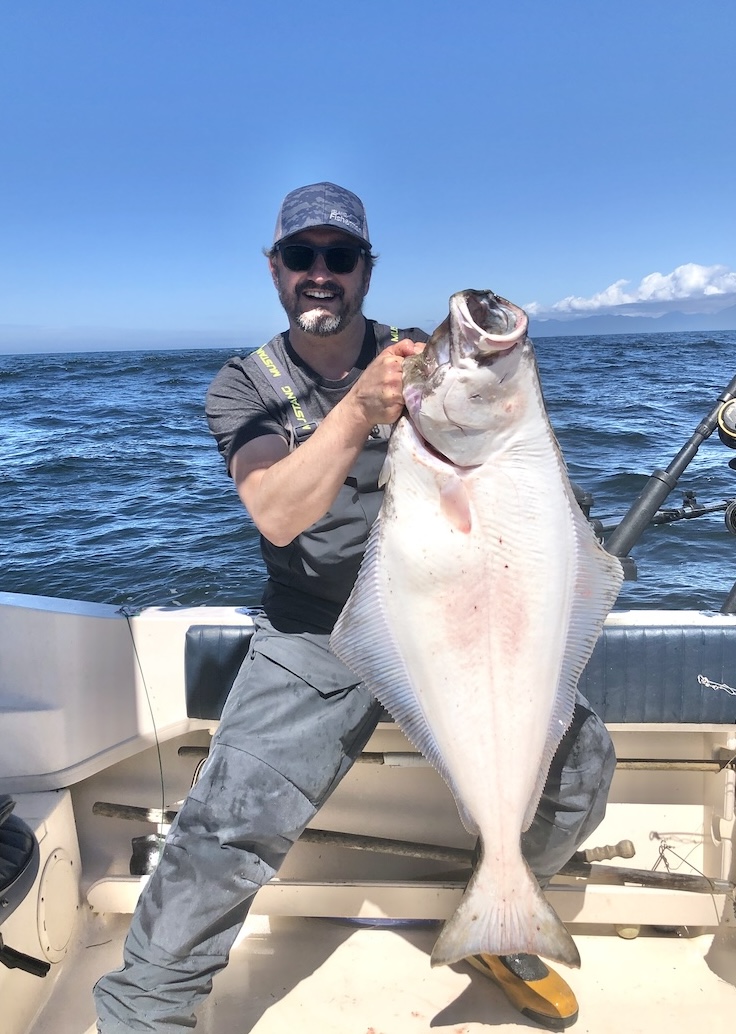
Joel Unickow halibut (Photo: Rob Frawley Lucky Strike Sportfishing Tofino)

